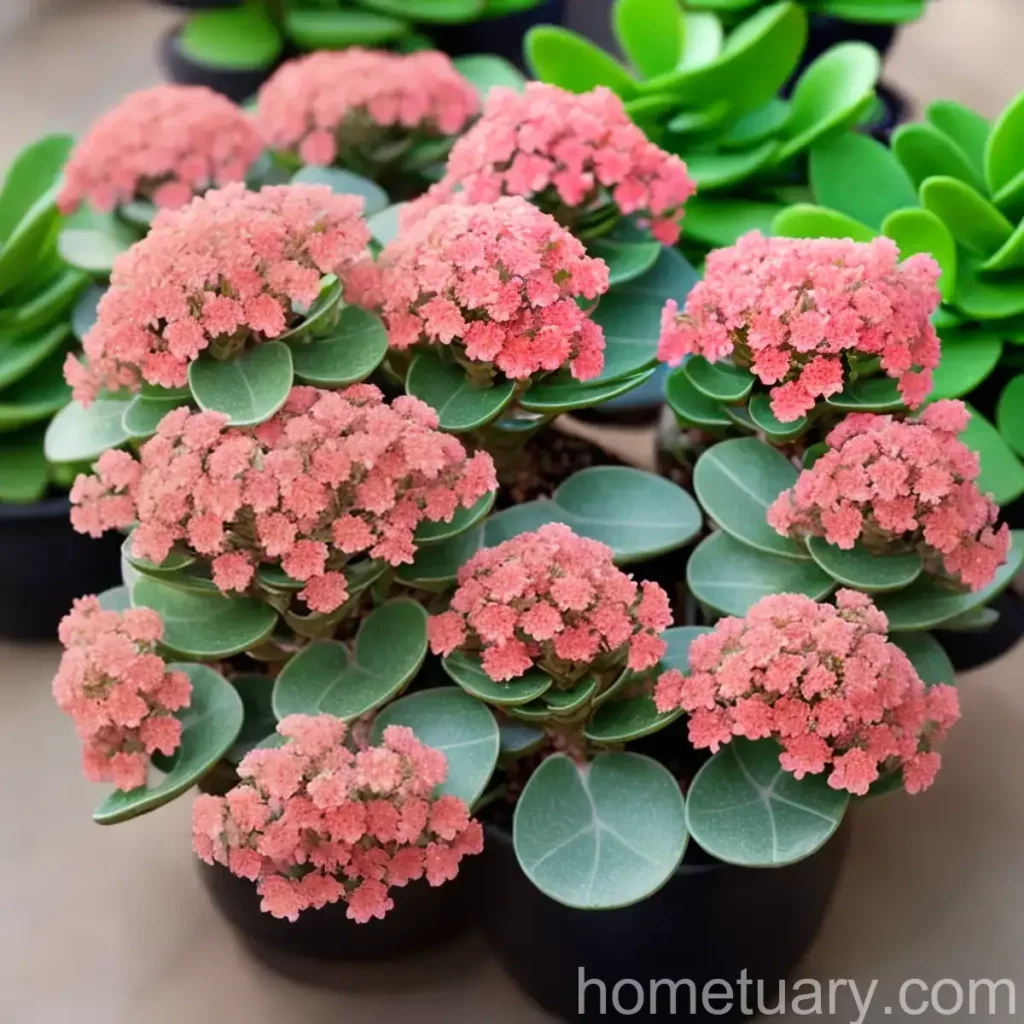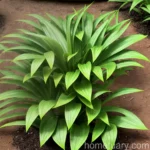Kalanchoe (Kalanchoe blossfeldiana): A Comprehensive Guide
Kalanchoe blossfeldiana, commonly known as kalanchoe, is a popular flowering succulent prized for its vibrant and long-lasting blooms. Its low-maintenance nature and ability to thrive in both indoor and outdoor settings make it a favorite among plant enthusiasts. In this extensive guide, we will delve into the various aspects of kalanchoe care, its uses, and cultivation techniques.
What is Kalanchoe (Kalanchoe blossfeldiana)?
Kalanchoe blossfeldiana, a member of the Crassulaceae family, is a succulent perennial native to Madagascar. It is characterized by its thick, glossy, dark green leaves and clusters of small, brightly colored flowers. The plant’s unique appearance and ability to bloom for extended periods have contributed to its popularity as an ornamental plant.
Key Takeaways – Kalanchoe (Kalanchoe blossfeldiana)
Here are some key points to keep in mind when it comes to kalanchoe care and cultivation:
- Kalanchoe is a flowering succulent with vibrant, long-lasting blooms.
- It is well-suited for both indoor and outdoor settings.
- Proper watering, sunlight exposure, and soil conditions are crucial for its healthy growth.
- Regular pruning and maintenance help promote robust and bushy growth.
- Kalanchoe is susceptible to certain diseases and pests, necessitating vigilance and proactive management.
- The plant’s propagation via leaf or stem cuttings is relatively straightforward and yields new plants with genetic fidelity.
Now, let’s explore the various aspects of kalanchoe care and cultivation in detail.
Culture
Uses
Kalanchoe blossfeldiana is primarily cultivated for its ornamental value, adorning indoor spaces, gardens, and landscapes with its vibrant blooms. Its low maintenance requirements and ability to thrive in diverse environmental conditions make it an ideal choice for both novice and experienced gardeners. Furthermore, kalanchoe’s air-purifying qualities contribute to its appeal as an indoor plant.
Water
Proper watering is essential for the well-being of kalanchoe plants. Here are some key watering tips:
- Moderation: Overwatering can lead to root rot and other fungal diseases, so it’s crucial to allow the soil to dry out between waterings.
- Frequency: Water kalanchoe when the top inch of the soil feels dry to the touch. It’s best to water deeply and then allow excess water to drain away freely.
Sunlight
Kalanchoe requires adequate sunlight to support healthy growth and prolific blooming. Here are some guidelines for providing the right amount of sunlight:
- Light Requirements: Place kalanchoe in a location with bright, indirect sunlight. Direct sunlight can scorch the leaves and flowers, especially during the peak of summer.
- Indoor Placement: If grown indoors, position the plant near a south- or west-facing window to ensure it receives sufficient light.
Fertilizer
Fertilizing kalanchoe plants at the appropriate times and with the right nutrients is crucial for supporting vigorous growth and prolific flowering. Here are some fertilizer recommendations:
- Balanced Fertilizer: Use a balanced, water-soluble fertilizer with an NPK (nitrogen, phosphorus, and potassium) ratio of 20-20-20 or 20-10-20.
- Frequency: Apply the fertilizer at half strength every 2-4 weeks during the growing season, reducing or ceasing fertilization during the plant’s dormant phase.
Soil
The choice of soil greatly influences the overall health and growth of kalanchoe plants. Consider the following soil preferences:
- Well-Draining Mix: Plant kalanchoe in a well-draining potting mix to prevent waterlogging and root rot. A combination of peat moss, perlite, and coarse sand is ideal.
- Acidity: The soil pH should be slightly acidic to neutral (pH 6.0-7.0) to support nutrient uptake and overall plant health.
Pruning
Pruning kalanchoe plants, when done correctly, promotes compact growth and encourages the development of new flower buds. Here are some pruning techniques to consider:
- Deadheading: Remove spent flowers and wilted foliage regularly to promote continuous blooming.
- Pinching: Pinch back leggy or elongated stems to encourage branching and a more bushy growth habit.
Propagation
Kalanchoe can be easily propagated from leaf or stem cuttings. Here’s how to propagate kalanchoe plants:
- Leaf Cuttings: Gently remove healthy leaves from the mother plant and allow them to callus for a day or two. Plant the cuttings in a well-draining potting mix and keep the soil lightly moist until new plantlets emerge.
- Stem Cuttings: Take 3-4 inch stem cuttings, remove the lower leaves, and plant them in a suitable rooting medium. Keep the cuttings warm and lightly moist until they root and establish.
Container Popularity
Due to its compact size and attractive blooms, kalanchoe is a popular choice for container gardening. It thrives in a variety of containers, including clay pots, ceramic planters, and hanging baskets. Its adaptability to different container types makes it a versatile plant for both indoor and outdoor arrangements.
Common Diseases
Kalanchoe plants are susceptible to certain diseases, including fungal infections and bacterial rots. Understanding and recognizing these diseases is crucial for effective management. Here are some common diseases that affect kalanchoe plants:
- Root Rot: Caused by overwatering or poorly draining soil, resulting in dark, mushy roots and wilting foliage.
- Powdery Mildew: Characterized by a powdery white coating on leaves, caused by fungal spores and favored by high humidity and poor air circulation.
- Bacterial Soft Rot: Manifests as water-soaked lesions on the leaves and stems, leading to tissue breakdown and collapse.
Disease Diagnosis
Accurately diagnosing diseases affecting kalanchoe plants is essential for implementing appropriate treatment measures. Here’s a brief overview of diagnosing common kalanchoe diseases:
- Visual Symptoms: Carefully examine the plant for any visual cues such as leaf discoloration, wilting, or unusual growths.
- Environmental Assessment: Consider factors such as watering practices, humidity levels, and sunlight exposure, as these can contribute to disease development.
Common Pests
Several pests pose a threat to the health of kalanchoe plants. Identifying and addressing these pests promptly is crucial for preventing extensive damage. Here are some common pests that affect kalanchoe:
- Aphids: Small, soft-bodied insects that cluster on the undersides of leaves and excrete honeydew, leading to sooty mold growth.
- Spider Mites: Tiny arachnids that cause stippling and webbing on leaves, affecting overall plant vigor.
- Mealybugs: Soft-bodied insects covered in white, waxy filaments, usually found in leaf axils and other concealed areas.
Botanist’s Tips
As a plant scientist, I have some valuable insights to share regarding the cultivation and care of kalanchoe plants:
- Temperature Tolerance: While kalanchoe thrives in moderate temperatures, it can tolerate brief periods of cooler or warmer conditions. Protect the plant from frost, as prolonged exposure can be detrimental.
- Dormancy Period: After the blooming period, kalanchoe may enter a period of dormancy. During this time, reduce watering and cease fertilization to allow the plant to rest and recuperate.
Fun Facts
Discover some intriguing and lesser-known facts about kalanchoe plants:
- Ethnobotanical Uses: In traditional medicine, kalanchoe has been used to treat various ailments, including inflammations, infections, and skin conditions.
- Leaf Propagation: Not only can kalanchoe be propagated from leaf cuttings, but the new plantlets that sprout can often show unique and novel leaf variations compared to the parent plant.
- Symbolism: In some cultures, kalanchoe symbolizes endurance, strength, and lasting affection, making it a popular gift plant for special occasions.
Links to External Resources
For additional information on kalanchoe care and cultivation, be sure to explore the following resources:
- [1] “Kalanchoe Care Guide” – Comprehensive guide to caring for kalanchoe plants, including watering, lighting, and propagation tips.
- [2] “The Fascinating World of Succulents” – Explore a wide range of succulent plants, including kalanchoe, and learn about their unique characteristics.
- [3] “Ornamental Plant Diseases and Pests” – Detailed information on diagnosing and managing common diseases and pests affecting ornamental plants, including kalanchoe.
In conclusion, kalanchoe (Kalanchoe blossfeldiana) is a captivating and versatile plant that offers numerous aesthetic, health, and cultural benefits. By understanding its specific care requirements and addressing potential challenges proactively, both novice and experienced gardeners can enjoy the beauty and resilience of this remarkable succulent.
Keywords: Kalanchoe plant care, Kalanchoe blossfeldiana varieties, How to grow Kalanchoe blossfeldiana, Kalanchoe flowers, Kalanchoe indoor plants, Kalanchoe potted plants, Kalanchoe succulents, Kalanchoe propagation, Kalanchoe watering tips, Kalanchoe plant diseases, Kalanchoe plant pests, Kalanchoe pruning techniques, Kalanchoe blooming season, Kalanchoe sunlight requirements, Kalanchoe soil preferences, Kalanchoe planters and pots, Kalanchoe fertilizer recommendations, Kalanchoe health benefits, Kalanchoe air-purifying qualities, Kalanchoe medicinal uses, Kalanchoe gardening tips, Kalanchoe plant arrangements, Kalanchoe container gardening, Kalanchoe plant decor ideas, Kalanchoe for beginners, Kalanchoe for low-light conditions, Kalanchoe for small spaces, Kalanchoe for hanging baskets, Kalanchoe for office environments, Kalanchoe for landscaping, Kalanchoe for outdoor gardens, Kalanchoe unique leaf patterns, Kalanchoe plant symbolism, Kalanchoe plant history, Kalanchoe plant folklore, Kalanchoe plant origins, Kalanchoe plant characteristics, Kalanchoe plant growth stages, Kalanchoe plant dormancy, Kalanchoe plant winter care, Kalanchoe plant companion plants, Kalanchoe plant toxicities, Kalanchoe plant pet-friendly options, Kalanchoe plant color variations, Kalanchoe as a gift plant, Kalanchoe versatile plant uses, Kalanchoe natural habitats, Kalanchoe plant photography tips, Kalanchoe plant art inspiration, Kalanchoe plant DIY projects















